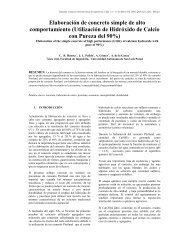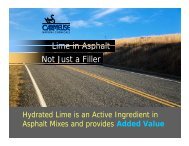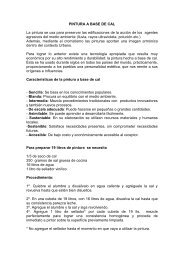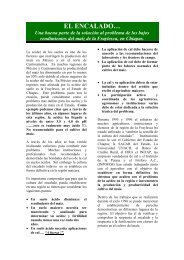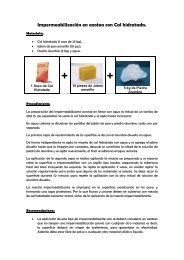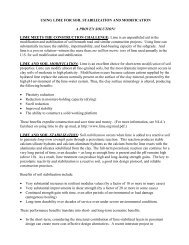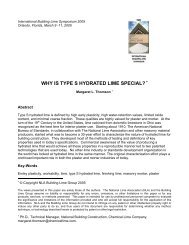Land Contamination: Technical Guidance on Special Sites: Acid Tar ...
Land Contamination: Technical Guidance on Special Sites: Acid Tar ...
Land Contamination: Technical Guidance on Special Sites: Acid Tar ...
Create successful ePaper yourself
Turn your PDF publications into a flip-book with our unique Google optimized e-Paper software.
3.2.2 pHThe pH of acid tars is variable and dependent <strong>on</strong> the following:• type of process that generated the acid tar;• the amount and strength of sulphuric acid used in the process; and• the degree of pre-treatment prior to disposal.White oil refining gives rise to the most acidic tars, being below pH 1. Benzole refining isless severe (as aromatics must not be sulph<strong>on</strong>ated to any significant extent); re-refining isvariable. However, pH values are frequently 2 or lower unless wastes have been pre-treated.As menti<strong>on</strong>ed previously, at some sites the tars may have been neutralised prior to disposal.At others there may have been steam stripping/washing to remove and recover some of thesulphuric acid (for amm<strong>on</strong>ium sulphate manufacture). A further method involved use ofsolvent oil (creosote) to extract sulphuric acid. Typically, however, the tars will have beenplaced in lago<strong>on</strong>s to “weather”.3.2.3 Colour<strong>Tar</strong>s from re-refining (c<strong>on</strong>taining some oils) are generally browner than those from white oilproducti<strong>on</strong> and benzole refining, which are darker (essentially black) and thicker. <strong>Acid</strong> tarsthat are exposed at the ground surface will weather over time and may take <strong>on</strong> a dry, brownishappearance.3.2.4 OdourAll acid tars are odorous. Re-refining tars are generally characterised by petroleum or "oily"odours, while the benzole tars are generally more sulphurous. Sulphurous odours tend todisappear with time as sulphur dioxide is released from the tars. Other sulphur-basedcompounds, including thiophenes and mercaptans, may volatilise from the lago<strong>on</strong> surface andthese can be odorous. Hydrogen sulphide may also be released at low levels. The weatheringprocess results in little odour or air polluti<strong>on</strong> from the lago<strong>on</strong>, although investigati<strong>on</strong> andremediati<strong>on</strong> will disturb the lower layers and may give rise to acidic vapours and the releaseof more volatile hydrocarb<strong>on</strong>s.The general physical properties of the different types of acid tars are summarised in Table 3.1,although it should be noted that colour, odour and viscosity can vary markedly, even withinthe same lago<strong>on</strong>.R&D <str<strong>on</strong>g>Technical</str<strong>on</strong>g> Report P5-042/TR/04 16



